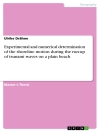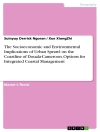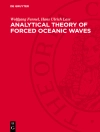This book offers a practical reference guide to soft rock mechanics for engineers and scientists. Written by recognized experts, it will benefit professionals, contractors, academics, researchers and students working on rock engineering projects in the fields of civil engineering, mining and construction engineering.
Soft Rock Mechanics and Engineering covers a specific subject of great relevance in Rock Mechanics – and one that is directly connected to the design of geotechnical structures under difficult ground conditions. The book addresses practical issues related to the geomechanical properties of these types of rock masses and their characterization, while also discussing advances regarding in situ investigation, safety, and monitoring of geotechnical structures in soft rocks. Lastly, it presents important case histories involving tunnelling, dam foundations, coal and open pit mines and landslides.
Tabela de Conteúdo
Chapter 1. Introduction.- Chapter 2. Engineering View of Soft Rocks.- Chapter 3. The Geology of Soft Rocks.- Chapter 4. Mudrocks as Soft Rocks.- Chapter 5. Sandstones in Dam Foundations and Tunnels.- Chapter 6. Geomechanical Characterization of Evaporitic Rocks.- Chapter 7. Site Investigation for Soft Rock Mass.- Chapter 8. Geomechanical Properties of Soft Rock Masses by Laboratory and In Situ Testing.- Chapter 9. Interaction Between Water and Soft Rocks.- Chapter 10. Weathering, Erosion, and Susceptibility to Weathering.- Chapter 11. Weathering Of Rocks In Brazil.- Chapter 12. Degradation Processes In Civil Engineering Slopes In Soft Rocks.- Chapter 13. Mining Slopes In Weathered And Weak Rocks.- Chapter 14. Correlation of Properties of Soft Rocks.- Chapter 15. Deformation mechanism of soft rock.- Chapter 16. Soft Rock Roadway Reinforcement.- Chapter 17.Large Deformation Support For Soft Rocks Engineering.- Chapter 18. Rock Mass Classification Of Chalk Marl In The Uk Channel Tunnels Using Q.- Chapter 19.
Applications Of The Gsi System To The Classification Of Soft Rocks.- Chapter 20. Soft Rocks In Underground Hydroelectric Schemes.- Chapter 21. Tunneling In Weak Rock.- Chapter 22. Face Stability Of Tunnels In Soft Rocks.- Chapter 23. Characterization Of Soft Rocks In Brazilian Coal Beds.- Chapter 24. Soft Rocks In Dam Foundation And Dam Sites.- Chapter 25. Soft Rock As A Dam Construction Material.
Sobre o autor
Prof. Dr. Milton Kanji is graduated as Geologist from University of São Paulo, Brazil (1960). He got his MSc degree in Engineering Geology and Geotechnics at the University of Illinois and his Ph D in Rock Mechanics at the University of São Paulo; he also got the post-doctoral title “Livre Docente” on Earth Works at the Polytechnical School of the University of São Paulo, where he is Associate Professor at the Department of Structural Engineering and Geotechnics. He has worked with large engineering firms dedicated to geotechnical services and design. He was responsible for the basic design of the Itaipu main dam foundations, and the rock mechanics and engineering geology related to Água Vermelha and Jaguara dams, among others. He has been involved in more than 50 dam sites. He performed or coordinated the design of 6 important Petrobras tunnels for gas pipelines, through the Company Shaft Consultoria Ltda, of which was the Technical Director. Presently he works as an independent consultant, mainly involved with dam foundations, tunnels and slope stability. He has worked as expert witness in arbitrations by hydroelectric projects and tunnels, as an expert for insurance companies and loss adjusters. Is author of more than 100 technical papers and book chapters. As ISRM Fellow, former ISRM Vice-President for South America (1975-1979), he is presently Chairman of the Technical Commission of Soft Rocks.
Prof. Dr. Manchao He is currently an Academician in Chinese Academy of Sciences and National Academy of Engineering of Argentina, Professor at China University of Mining & Technology, Beijing (CUMTB) and Tongji University. He is also the Director of State Key Laboratory for Geomechanics and Deep Underground Engineering in Beijing, China. He is recognized as the leader of the Chinese Union for Mining Innovation (CUMI). And he is serving as Vice President of International Society for Rock Mechanics and Rock Engineering (ISRM), Chairman of ISRM Education Fund Committee, Vice Chairman of the Technical Commission of Soft Rocks. He received his Bachelor and Master Degree in engineering geology from Changchun College of Geology in 1981 and 1985 respectively, and obtained his Ph.D. in Engineering Mechanics from CUMTB in 1989. He got an Honorary Doctorate from University of Mons in Belgium in 2012. He is mainly engaged in the research of Rock Mechanics and Engineering, including soft rock mechanics and engineering, mining technologies, rockburst mechanism, landslide, active fault stability analysis, monitoring and control, etc. He has published 10 books and over 190 papers in technical journals and in conference proceedings. He also serves on the Editorial Board of several Journals, and received 5 National Prizes and awards in his career.
Prof. Luis Ribeiro e Sousa has more than 45 years of professional experience. He is a retired Full Professor at the Porto University in Portugal where worked on riskanalysis and numerical analysis for geotechnical and rock mechanics workings. He was responsible for organizing the ISRM Rock Mechanics Congress in 2007 in Lisbon. He was President of the firm SKEC Engineering Consulting. His work encompasses rock mechanics applied to dam foundations, subways and other types of underground structures, mining and petroleum applications, field and laboratory testing. Prof. Sousa has broad international experience having acted in about 16 different countries. His activities in PR China lead him to be recognized as a scholar by the Chinese Foreign Experts Bureau in 2010, 2011, 2013 and 2014. He was a consultant to the State Key Laboratory for Geomechanics and Deep Underground Engineering in Beijing and Professor in the China University of Mining and Technology in Beijing, as well as Professor at the Tongii University in Shanghai. He is author or co-author of about a hundred technical papers and 20 technical books.












